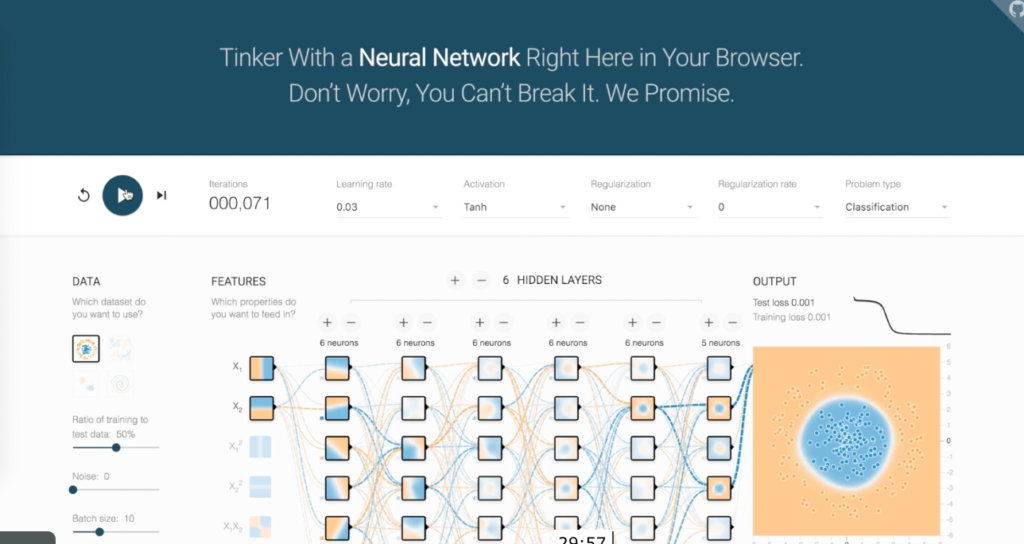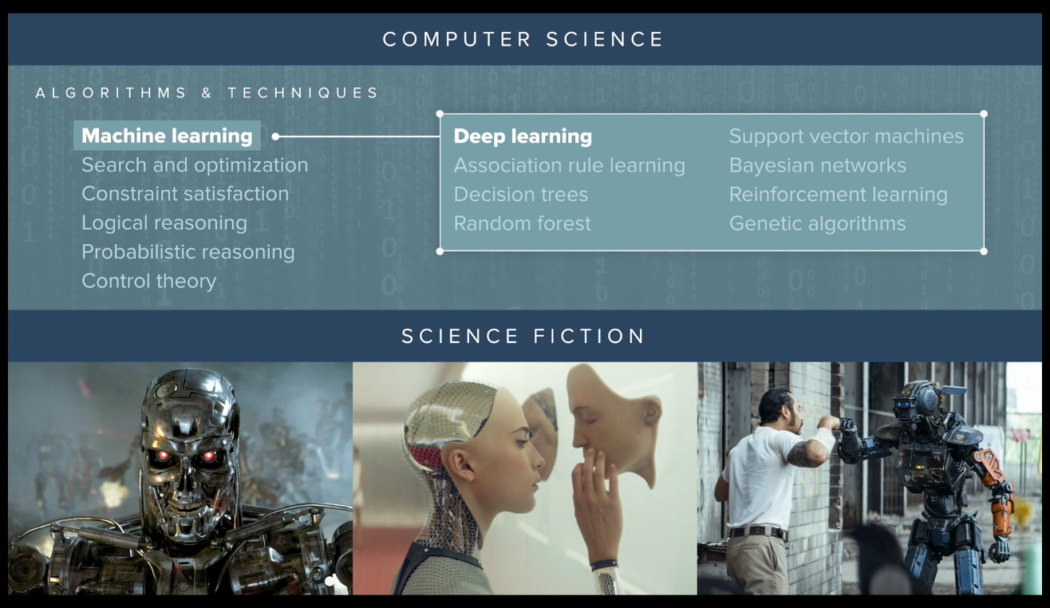Artificial Intelligence Primer from Frank Chen of Andreessen Horowitz
 Frank Chen, a Partner at Andreessen Horowitz, has a video that is a great introduction to Artificial Intelligence (AI) for novices looking to understand the most important technology shift since mobile. The 46-minute video goes into the history of AI, the building blocks of general AI and key components such as machine learning and deep learning.
Frank Chen, a Partner at Andreessen Horowitz, has a video that is a great introduction to Artificial Intelligence (AI) for novices looking to understand the most important technology shift since mobile. The 46-minute video goes into the history of AI, the building blocks of general AI and key components such as machine learning and deep learning.
5 Building Blocks and One Destination
 Mr. Chen may be an investor, but he has some technical chops and history in AI that goes back to the early 1990’s as an intern at IBM working on an early tool set for building expert systems. He also earned a degree in Symbolic Systems (Cognitive Science) at Stanford. In the video, he discusses the different components that researchers originally identified as the building blocks of AI if it is to reach human-level intelligence:
Mr. Chen may be an investor, but he has some technical chops and history in AI that goes back to the early 1990’s as an intern at IBM working on an early tool set for building expert systems. He also earned a degree in Symbolic Systems (Cognitive Science) at Stanford. In the video, he discusses the different components that researchers originally identified as the building blocks of AI if it is to reach human-level intelligence:
- Reasoning – Computers must be able to reason (e.g. IBM’s Deep Blue Chess Program).
- Knowledge Presentation – For a computer to understand and interact with people it needs to understand the real world and then communicate in that context: (e.g. What are objects? What are people? What is language?)
- Planning – Computers would need to plan and navigate around the world we live in (e.g. robotic ambulation, self-driving cars for navigation; planning includes goal setting, long-term thinking and trade-off analysis)
- Natural Language Processing – Computer must understand the components of language (e.g. context, semantics, idioms, inflection and nuances of spoken communication)
- Perception – Computers need to know how to perceive things in the world (e.g. the equivalent to a human’s senses such as sight, hearing and touch).
- The expected outcome: Generalized Intelligence. This might include emotional intelligence, creativity, moral reasoning, intuition, and more.
While the goal of AI researchers has consistently been toward delivering general artificial intelligence (i.e. human level intelligence), the bigger story is probably that the technologies are now delivering specific benefits and solving tangible problems and not that sentient robots are on a near horizon.
Deep Learning is Driving the AI Boom
The video goes into some depth about previous cycles in AI and the series of advances followed by inevitable AI winters. In the Gartner vernacular, this would look like a repeating hype cycle where the “peak of inflated expectations” are followed consistently by a “tough of disillusionment.” However, recent deep learning breakthroughs seem different. They may be leading to new inflated expectations, but are clearly offering tangible benefits and are fueling the most recent AI boom.

Visual of Tensor Flow Deep Learning Simulator Presented in the Video
Mr. Chen explains how deep learning is a class of machine learning which itself is a subset of AI: “Deep Learning techniques feed data structures modeled on the human brain a bunch of data and then there are algorithms that help the computer learn based on that data. It is the complete opposite approach to the approaches that had been taken.” Instead of teaching computers what experts knew and delivering that information back based on rules sets, the solution is structured as a thinking machine, fed data and expected to learn and draw conclusions on its own. He comments,
“Deep learning happens to be the most productive technique we have come across in the last couple of decades to get computers to behave like humans…The way I think about it now is that all of the serious applications from here on out need to have deep learning and AI inside in exactly the same way that all serious computing systems needed to have Intel chips inside them. Deep learning is the most fundamental advance in artificial intelligence research since we started.”
If you would like to have a historical point of view on the development of AI and the catalyst behind the current boom in development and new applications, it will be 45 minutes well spent.
Follow @bretkinsella
Japanese Insurance Company Replaces Office Workers with IBM’s Watson
In the Battle Between Amazon and Google, It’s Not About the Hardware









